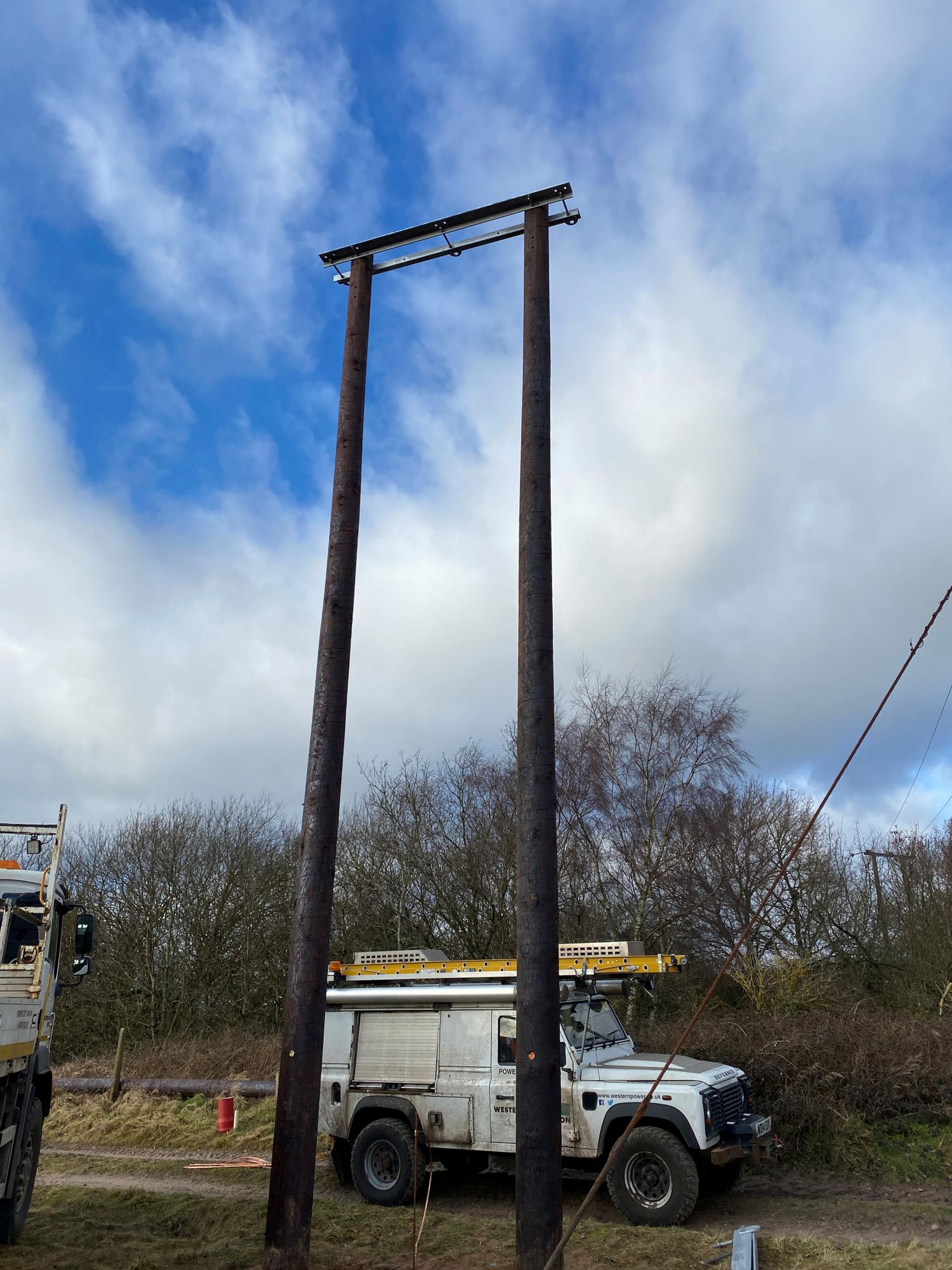Pole Position for ACE Environmental Innovation Project
A ‘world first’ innovation project is aiming to develop a new, greener method for disposing of redundant wooden poles, allowing creosote to be extracted from the wood so that it can be repurposed, rather than being incinerated.

The Active Creosote Extraction project– known as ACE – is part of our commitment to a sustainable, low carbon future.
At WPD, we replace about 27,000 wooden poles each year, as they reach the end of their useful life. Creosote-impregnated wooden poles last for about 30 years.
At present, poles are either incinerated or left to landowners to safely reuse. However, the ACE project aims to replace the high temperature incineration process with a more environmentally friendly solution, using an innovative, carbon friendly, extraction technique. This removes the creosote to levels which allows the poles to be treated as non-hazardous waste, enabling the wood to be safely repurposed.
WPD Graduate Innovation Engineer Jacob Lynch said: “This is a world first in testing extraction methods for the removal of creosote from redundant wooden poles.
“The project will aim to commercialise the method, if successful, and apply this to other network operators and possibly telecom networks. This is just one of numerous projects WPD is working on to help meet its 2028 net zero target.”
The £1.46 million project is being run in partnership with GPT Environmental and is funded by the Network Innovation Allowance (NIA).
WPD has pledged to be a net zero organisation by 2028 - that’s 22 years ahead of the UK government’s own net zero target – as part of our commitment to a sustainable future. This commitment, which is outlined in our Business Plan for 2023 – 28, includes facilitating the mass connection of low carbon technologies, like electric vehicles and heat pumps, supporting community energy, and tackling our own business carbon footprint. Innovation will also play a key role in driving sustainability. The plan also details our pledge to help stakeholders meet their own ambitious net zero targets, some as early as 2028.
Creosote is used as a wood preservative to deter fungi and insects. Studies show that incinerating 840 tonnes of wooden poles each year is the equivalent of driving a typical van to the moon and back 11 times.
- Innovation
